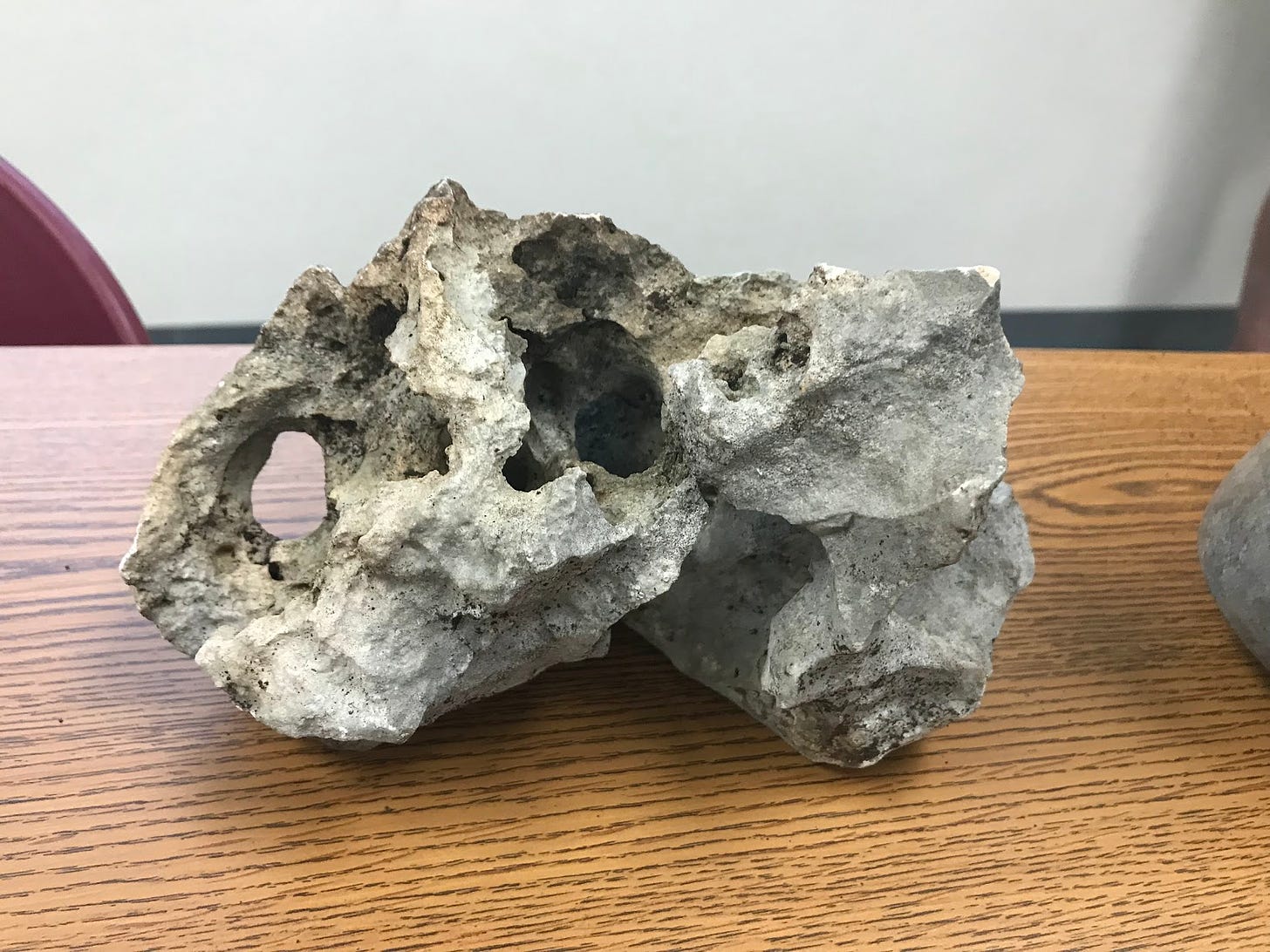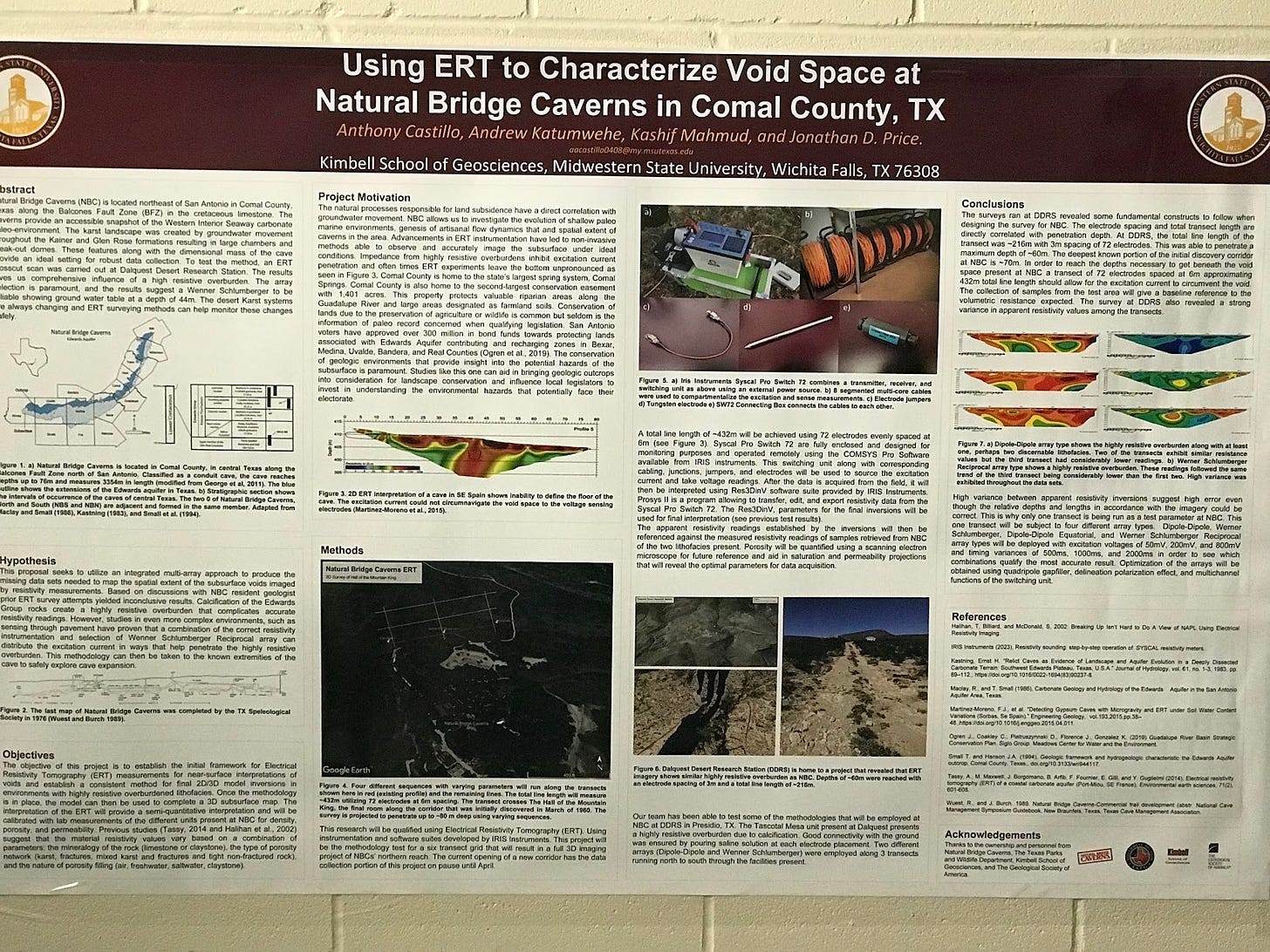Fascinations
I had a gloriously geeky evening on Thursday. I've been taking the Master Naturalist class, so my Thursday evenings have been devoted to a lifelong fascination with the world around me. Lectures on botany, mycology, geology, and more... I've missed this kind of learning. So I showed up to the classroom where the class is meeting, come in and chat with the people I've been getting to know... and there's no presenter. A few minutes after the lecture should have started, one of the ladies who runs the class went in search of him. As he was a new speaker, she didn't know what he looked like, and she came back saying that she'd found a man working in a lab. When asked, this gentleman said he thought the professor had gone for the evening, but he'd be willing to present on his field of study?
She took him up on it, and I'm very happy she did. The whole class was! Not that we weren't looking forward to paleontology, but the people taking this class are, like myself, collectively fascinated with many things. The presentation was delivered by a grad student (and TA at the school) who will become a geophysicist (something I was only vaguely aware existed) who had just presented a poster on his research, and was in the lab so late as he was processing data from the final culmination of his field work and it was looking good!
What we got was an hour of a guy near-giddy over his data, and enthusiastic over the possibilities of the technology and methods he'd been setting up. That kind of joyful sharing is contagious, and I came home and geeked out at my husband about it, then told my son all about it today.
The research the soon-doctorate student had been doing was Electrical Resistivity Tomography. In essence, it gives you a picture of what's under the ground. In his case, it was tricky due to the nature of the soils in the Texas areas he was working with. High in limestone and karst, they are porous and don't conduct electricity all that well unless there's a fair amount of water in the soil. Which he had been fortunate enough to have, with a rainfall up until just before he laid out his array to collect the signals, and his fourth run (of four) having to be aborted due to more rain. He was working in an area with caves, and when he returned to process his data, was excited to discover that the cave he'd included in his array could be detected accurately (since the size and location was known) in addition to what looked like two undiscovered caves in the array area.
Which was very interesting, and we were all cheering him on by the end of the presentation, for him to finally be able to do his thesis and graduate. It was the Q&A, though, that brought out some really useful bits for me as a writer and science brain. The ERT is used, it seems, extensively by oil & gas companies to identify not only places they might want to drill, but also the nature of the rocks underground. This influences things like being careful about putting water down, as water will break down some kinds of rocks and cause sinkholes to open up. He also told us of an apple orchard by the Rio Grande that used continuous monitoring to see when the trees were taking up water, so they knew when to irrigate. It's that sensitive! And what a way to save water and money, only giving the trees water when they can use it. It can of course be used to 'look' at ground water, down far deeper than the surface, and to measure replenishment of aquifers. Since we'd supposed to be talking paleontology, I asked him if it could be used to find fossils, and he said it could, but ground-penetrating radar and lidar were better... and he told us of a fellow student's project to map a smal town's cemetery where the wooden crosses were long gone, as were all the records before the modern era.
Plus, he brought us rocks to look at. When was the last time someone shared a cool rock with you? Or you with them?

When he said there were cavities in the ground, this is not what I was expecting. Suddenly, I understood sinkholes much more clearly. The bigger rock has holes the size of a baseball in it.

The smaller one is visibly friable.
Sometimes you don't know what you don't know, and now I know enough to want to dig into the fascinating possibilities of this technology. So many ideas!
Serendipity takes many forms. Including that of a very nice guy with a serious enthusiasm for science and the willingness to get up and talk to a small group of curious people. I love this kind of thing.

As I walked to my car, I found his poster on display in the hall (our presenter is the lead name on it) and snapped a photo.




